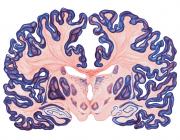Topographic organization of areas V3 and V4 and its relation to supra-areal organization of the primate visual system.
Publication Year
2015
Type
Journal Article
Abstract
Areas V3 and V4 are commonly thought of as individual entities in the primate visual system, based on definition criteria such as their representation of visual space, connectivity, functional response properties, and relative anatomical location in cortex. Yet, large-scale functional and anatomical organization patterns not only emphasize distinctions within each area, but also links across visual cortex. Specifically, the visuotopic organization of V3 and V4 appears to be part of a larger, supra-areal organization, clustering these areas with early visual areas V1 and V2. In addition, connectivity patterns across visual cortex appear to vary within these areas as a function of their supra-areal eccentricity organization. This complicates the traditional view of these regions as individual functional "areas." Here, we will review the criteria for defining areas V3 and V4 and will discuss functional and anatomical studies in humans and monkeys that emphasize the integration of individual visual areas into broad, supra-areal clusters that work in concert for a common computational goal. Specifically, we propose that the visuotopic organization of V3 and V4, which provides the criteria for differentiating these areas, also unifies these areas into the supra-areal organization of early visual cortex. We propose that V3 and V4 play a critical role in this supra-areal organization by filtering information about the visual environment along parallel pathways across higher-order cortex.
Keywords
Journal
Vis Neurosci
Volume
32
Pages
E014
Date Published
01/2015
ISSN Number
1469-8714
Alternate Journal
Vis. Neurosci.
PMID
26241035

